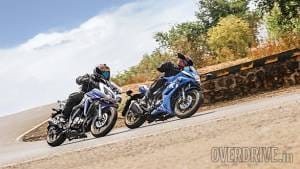Mini comparison: Bajaj Pulsar AS 150 vs Suzuki Gixxer SF vs Yamaha Fazer
The new wave of motorcycles in the 150cc class began with Yamaha revamping their FZ line with their Blue Core tech suite. The latest from that line is this, the Fazer Fi V2. Up against it, is the new Suzuki Gixxer SF which adds a fetching new fairing to the Gixxer but steers carefully clear of messing with an otherwise successful and critically acclaimed package. The newest in the segment, of course, is the new Bajaj Pulsar AS 150 which has just come out. We haven't got a chance to test the AS 150 and establish economy and performance metrics which is why this is a mini-comparison and a more comprehensive segment review will follow.
Styling, build and finish
Yamaha has always had the products with the best finish and build quality in the segment. However, Suzuki pulls out a bunny from its high-quality hat and the Gixxer SF feels even better built and finished. The Bajaj Pulsar AS 150 feels distinctly a notch or two behind on this count with its panel gaps, indifferently fitted plastic panels and so forth.
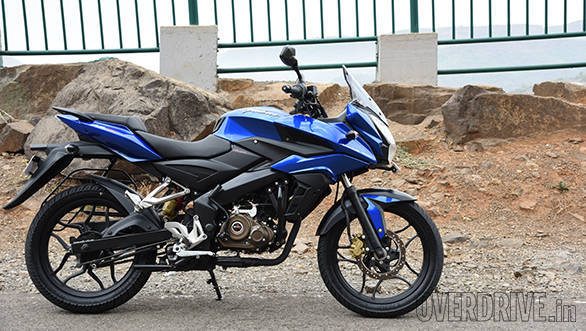

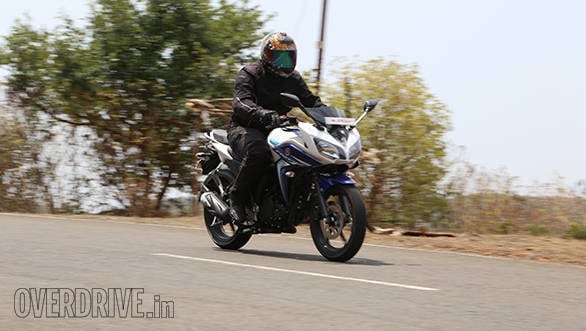
When it comes to styling, however, the battle is far closer. The Yamaha looks familiar and while the new stickers do their best to spruce up the look, the Yamaha isn't as great looking as the other two despite the Fazer being the freshest-looking of the FZ line-up in my eyes. The Gixxer SF, especially in the Suzuki MotoGP colours, looks stunning. The colour scheme is lovely and the finish and the way the fairing sits on the Gixxer frame makes the SF worthy of a series of double takes as you ride past people on the street. The Bajaj is no pushover either. The AS has an assured, restrained styling package where the half fairing looks wonderfully proportionate and the design is extremely pleasing. All things considered, I prefer the SF's fairing to the AS 150's half fairing but it's close enough for me to not worry too much which one wins. Add the SF's superior quality and it's the winner on this parameter set for me.
Engines, performance and efficiency
Yamaha took a dramatic decision to scale back displacement when they launched their version two of the FZ line. The engine became a 149cc single while almost every one grew their engines. The Gixxer has the biggest engine here at 154.9cc while the Apache RTR 160 and the Unicorn 160 both larger engines still. Unfortunately for the Yamaha, despite dropping weight and becoming 2kg lighter than the SF, it cannot equal the performance of the SF. The Suzuki has 1.7PS extra to play with. More importantly, while both the Yamaha and the Suzuki manage to extract their performance with great refinment and composure, the SF actually sounds great while the Yamaha sounds relatively muted.
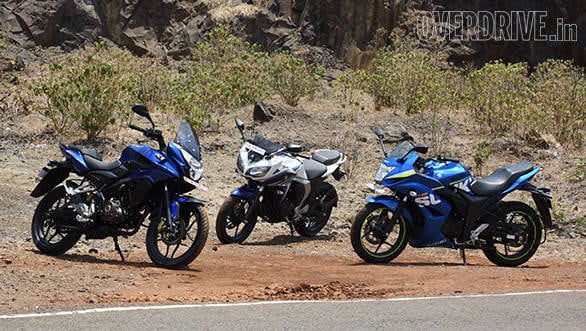
But while the Pulsar is 4 and 6kg heavier than the SF and the Fazer FI, it's 149.5cc engine makes 17PS and that's a hard gap to bridge for both the Japanese bikes. The sheer pulling power of the AS 150 leaves both the Japanese bikes behind. Going up on particularly steep hill, only the AS 150 gained speed in top gear while both the other bikes barely held on to their speeds. The Pulsar lags behind on refinement though. There's no vibration to complain of, but compared to the sweet sound of the Suzuki, the Pulsar sound thrashier and more metallic.
Ride, handling and brakes
As you might have read in our first ride of the AS 150, we like the soft springing of the chassis and it makes for a comfortable city bike. The flip side is that the accurate and responsive frame runs out of controlled suspension after a point and cornering it hard becomes difficult to do.
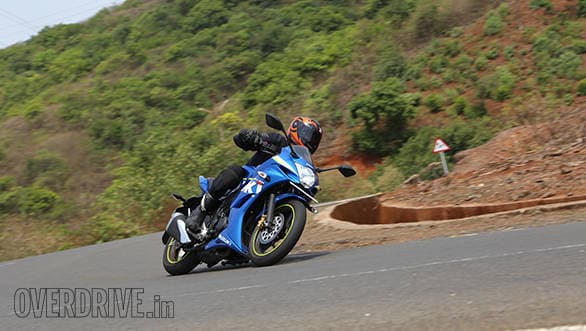
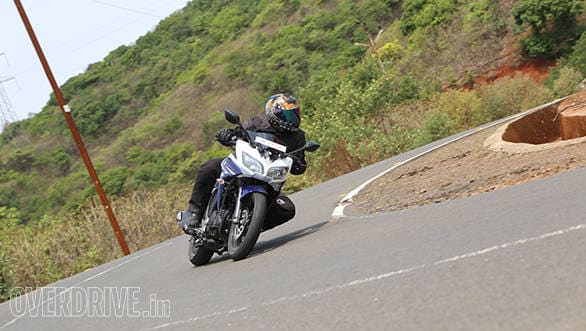
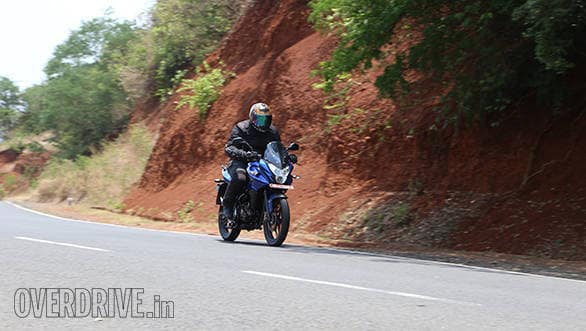
Fortunately for the Pulsar, both the Japanese bikes are sprung stiffer and that means it's overall comfort level is higher. The Yamaha feels the stiffest and it's not a big difference overall but you will feel the extra hardness over bad roads. The problem for both the bikes is that Suzuki has managed to hit a better compromise between the need to absorb bumps and the need for chassis composure in the corner. As a result, the SF is the most flattering of the two to ride. It passes on a little more of the bad road than the Pulsar but slam it hard on its side in a corner and the SF reacts enthusiastically and doesn't flinch the least bit. Some credit also for its radial MRF tyres that are a big part of this unwavering confidence.
Overall
It's a tough call. The Bajaj is the motorcycle to choose if outright power is your thing. That's the one department where even before we log test numbers we know the Bajaj has the advantage. However, if you are looking for a more rounded experience then other things must be considered as well.
The Yamaha Fazer Fi remains a well-thought out, extremely well executed package. Its manners, performance and finish levels are of a very high order and if you buy one you'll be happy. At Rs 1,02,600 on-road Mumbai, however, it happens to be Rs 2,000 more than the Gixxer SF MotoGP edition and that's a bit steep for what it is. Good buy, but slightly expensive. You could argue it has fuel injection and the others don't but the other bikes have other qualities.
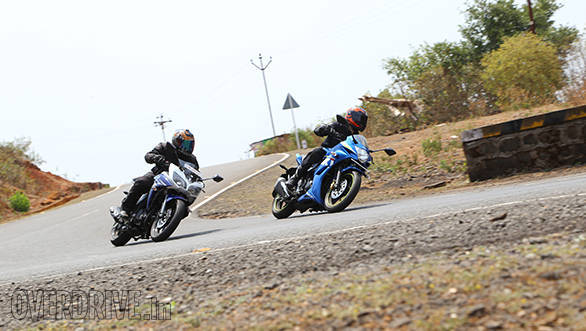
The most affordable, as usual, is Bajaj. At Rs 93,900 on-road Mumbai it costs about Rs 7,000 less than the Suzuki and Rs 9,000 less than the Yamaha. That's a terrific deal because you do get the most power for the money and a comfortable motorcycle to boot.
Which brings us to the Gixxer SF. At Rs 98,700 and Rs 1,00,500 on-road Mumbai for the base and MotoGP editions, it certainly is expensive compared to the Bajaj. But it's exquisitely made, comes together extremely well as a motorcycle and is clearly the best overall motorcycle here. It'll plant the biggest smile on your face. The question, then, is would you pay Rs 7,000 more to smile harder or save your money and enjoy the extra power? We shall answer that question in the full-on comparison test coming shortly.
Here is our spec-comparison of the three motorcycles
